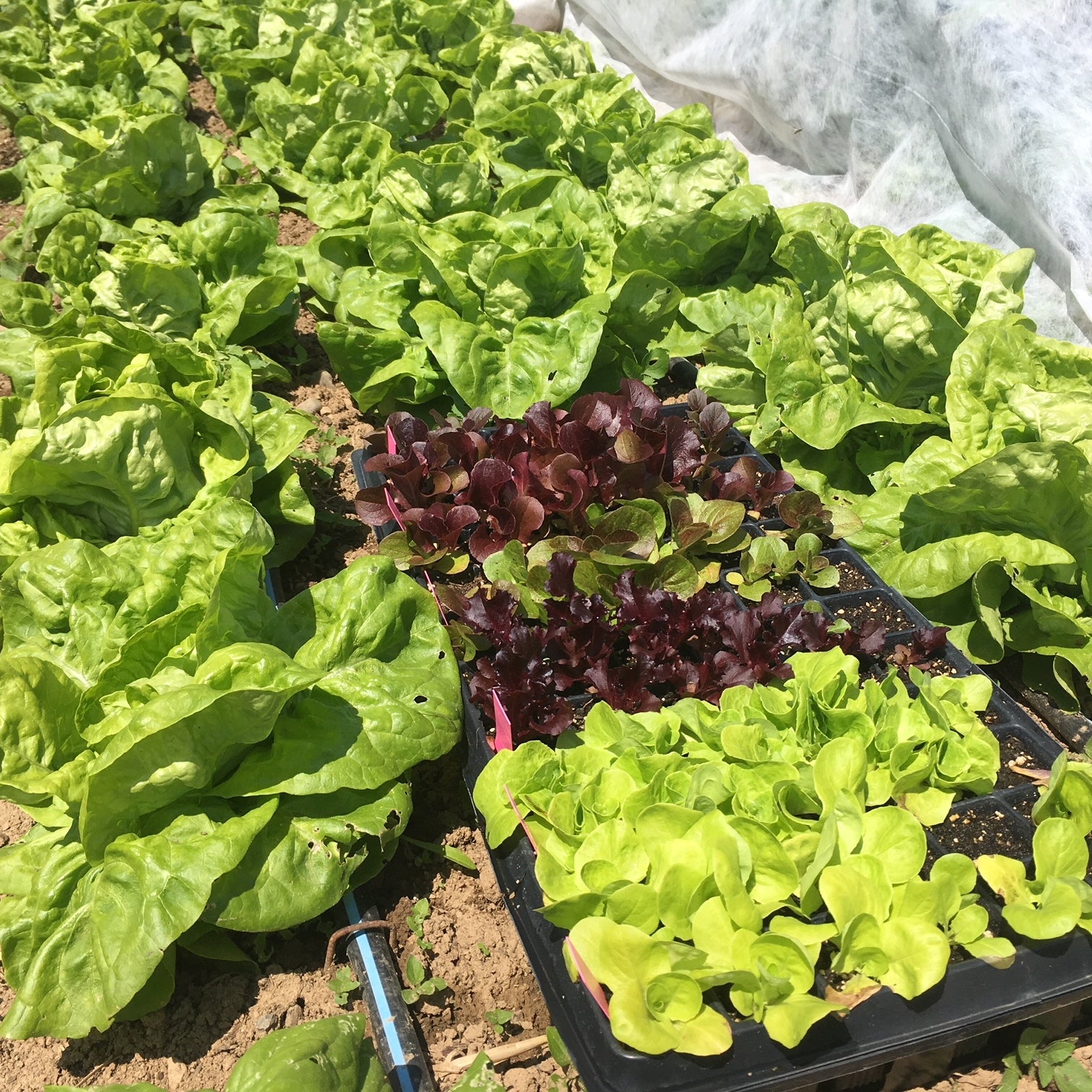How To Succeed With Your Successions
 Lettuce succession #2 ready to be planted.
Lettuce succession #2 ready to be planted.There is always a moment later this month when you think the garden is set. After weeks of sowing, transplanting, weeding, thinning... weeding again, the garden is finally filled with plants. A calm spell descends on the garden. Anyone hoping to have home-grown food on the kitchen table all season long will rejoice in this calm spell, but not for too long.
Growing meals throughout the season ahead means consistently looking forward. And this is where succession planting comes in: for a continual harvest, keep sowing to keep growing.
First, choose the appropriate crops for succession. To determine what will work for second, third and more sowings, contemplate these three questions:
- How many weeks are left in the growing season? Most plants don't grow much after the first frost, even cold hearty ones.
- How many days does it take for the crop to mature? If planning for a fall harvest, add an extra two weeks of time to make up for the shrinking days.
- Can it tolerate a frost? Can it tolerate heat?
 Butternut Squash growing on our farm last year.
Butternut Squash growing on our farm last year.Mache, spinach, and radishes for example, mature quickly, but don’t tolerate heat, so they are best planted early in the season, then again at the cool end (in fall). Tomatoes, peppers and eggplants, on the other hand, love the heat but take a few months to mature, so they can only be planted once per season in our northern climate. Cucurbits take a while to mature, but not so long that a gardener couldn’t squeeze in staggered plantings every few weeks for a continual harvest of squashes, melons and cucumbers.
Next, choose the right succession schedule:
Some veggies are ready to be harvested quickly and can only be harvested once per planting. To ensure a steady supply, keep planting them throughout the season. For example: Scarlet Nantes carrots mature in 65 days. Sow a couple of weeks’ worth of carrots every few weeks for a steady supply.
Great veggies for quick succession plantings are arugula, basil, cilantro, beets, dill, lettuce, radish, spinach, tatsoi and turnips. You can follow quick successions behind quick successions, making garden planning for these things easy. Other veggies can be left in the ground for a bit and harvested more than once, but start to loose steam over time. These can be started at longer intervals between plantings. Try a fresh planting of kale, broccoli, bush beans, chard and collards for an abundance of these veggies in the late summer and into the fall. You can follow these longer interval successions behind things that come out of the garden early such as peas, onions, and garlic.
2. Plant, plant, plant, eat.
Different varieties of the same crop have different requirements and results. Tomatoes, for example, take from 50 to 90 days to mature; summer squash loves heat, winter squash likes the cool of fall. Take advantage of the chaotic timing by planting everything! Choose three varieties – early, peak, and late season - to extend your harvest window to the max. Great veggies with different maturity dates: beans, broccoli, brussels sprouts, cabbage, carrots, cauliflower, celery/celeriac, eggplant, melon, peas, summer squash, and tomatoes. For example, plant Early Jersey Wakefield, Red Express and Danish Ballhead Cabbages all at the same time, and harvest them as they mature all summer long. Early Jersey and Red Express will mature about 60-70 days from transplant, whereas Danish Ballhead takes over 100 days.
Finally, try these 6 succession tips:
- Rotate plants in season. After one crop has been harvested, use that bed for veggies from a plant different family. This will help lessen the chance of disease, deter pests, and help balance soil nutrients. For example, follow Asian greens with Swiss chard.
- Sow or transplant a small amount of seeds/plants at one time at regular intervals to have a small but consistent harvest week to week. Instead of having an overwhelming amount of lettuce mature at once, for example, sow a few salads’ worth every week.
- When planting late in the season, choose plants that can be enjoyed young, in case the weather suddenly turns: greens, carrots, beets, radishes are all delicious even before they reach maturity.
- Switch varieties for switching weather. Keep your succession schedule, but change varieties to match the weather. For example, spinach loves cool temperatures, amaranth tastes similar and loves heat. Sow amaranth mid-summer, and bookend with spinach in the spring and fall.
- Consider how two plants share a space and interplant complimentary varieties. For example, planting a row of radishes, or other short crops, along the bottom of a pea trellis or growing lettuce between slow-growing kale gives the first crop a chance to get big enough before the second crop fills in to give the first some shade.
- Transplant and sow directly. Some varieties prefer to be directly sown in the garden (carrots, spinach, radishes, etc). Others, such as tomatoes, peppers, and eggplants, are best started indoors, then moved to the garden. And some, can go either way – seedling or seed. One simple succession trick is to plant those flexible crops from seed and transplants at the same time. Try this with summer and winter squash, parsley basil, dill, or lettuce.
For more specific varieties and planting dates, check out our post from last week:






